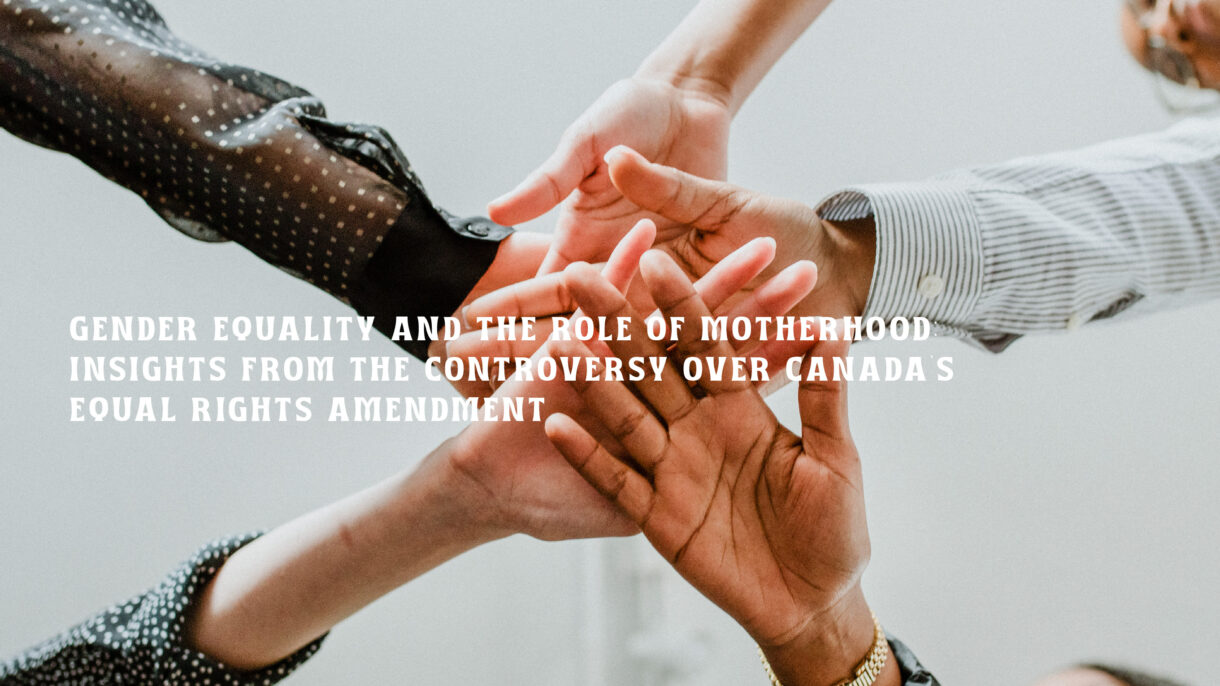
The pursuit of gender equality has been a longstanding struggle, deeply intertwined with societal values, cultural norms, and political frameworks. In Canada, the controversy surrounding the proposed Equal Rights Amendment (ERA) provides a critical lens through which to examine these themes, particularly the role of motherhood. The ERA, aimed at ensuring equal rights under the law regardless of sex, has sparked intense debate about its implications for women, families, and the institution of motherhood. This essay explores the nuances of this controversy, highlighting the intersections of gender equality, motherhood, and legal frameworks.
Historical Context of the Equal Rights Amendment in Canada
The Equal Rights Amendment was first proposed in Canada in the early 1980s as part of the broader push for women’s rights during the second wave of feminism. Advocates argued that an ERA would provide a constitutional guarantee of equality, thereby addressing systemic discrimination against women in various spheres, including employment, education, and family law. However, the amendment faced significant opposition, rooted in concerns about its potential effects on traditional family structures and the role of mothers.
The Role of Motherhood in the Debate
- Cultural Norms and Gender Roles: At the heart of the opposition to the ERA in Canada was a deeply entrenched cultural belief in traditional gender roles. Many argued that the amendment would undermine the family unit by promoting a model of equality that did not take into account the unique contributions of mothers. This perspective suggested that motherhood should be celebrated and protected within the legal framework, rather than treated as a role that could be subsumed under a broad definition of equality.
- Fear of Disruption: Critics of the ERA often expressed fears that the amendment would lead to the erosion of maternal rights and responsibilities. They argued that legal equality might necessitate a more egalitarian division of labor within the household, which could be perceived as a threat to the nurturing role of mothers. This concern reflected a broader societal anxiety about changing family dynamics and the implications for child-rearing.
- Intersectionality of Gender and Family: The debate over the ERA also illuminated the intersectionality of gender and family dynamics. For many women, especially those in low-income or marginalized communities, the role of motherhood is intricately linked to their economic stability and social identity. The ERA’s proponents argued that legal equality would empower women to navigate both their roles as mothers and their aspirations for professional fulfillment. However, opponents feared that such empowerment could detract from the family’s integrity.
Legal Perspectives on Gender Equality
- Constitutional Guarantees: The proposed ERA aimed to embed gender equality in Canada’s Constitution, providing a legal framework to challenge discrimination. Supporters believed that constitutional protections would offer women greater security in their rights, enabling them to advocate for better maternity benefits, parental leave, and workplace accommodations without fear of retribution.
- Family Law Implications: The intersection of the ERA with family law further complicated the debate. Proponents argued that equal rights under the law could lead to more equitable treatment in divorce, child custody, and support decisions. In contrast, critics feared that this could undermine the legal protections that favored mothers, particularly in cases of domestic violence or economic disparity.
The Evolution of Gender Equality Discourse
- Changing Perspectives: Over the years, the discourse surrounding gender equality and motherhood has evolved. The feminist movement has increasingly recognized the importance of intersectionality, acknowledging that the experiences of motherhood are not monolithic. This recognition has prompted a more nuanced understanding of how legal frameworks can both empower and constrain women in their roles as mothers.
- Shift in Policy Focus: The controversy over the ERA has catalyzed a broader discussion about the need for policies that support both mothers and fathers in the workplace. This shift has led to advocacy for more inclusive family leave policies, affordable childcare, and flexible work arrangements that acknowledge the realities of modern parenthood. By addressing the needs of all parents, society can better promote gender equality while recognizing the invaluable contributions of motherhood.
Current Context and Ongoing Challenges
- Legislative Efforts: In recent years, Canada has made strides in promoting gender equality through various legislative efforts, including the implementation of the Gender Equality Act and the introduction of paid parental leave. However, challenges remain. The conversation around the ERA highlights the need for ongoing advocacy and policy reform to ensure that women are not penalized for their roles as mothers.
- Cultural Shifts: The role of motherhood continues to be a contentious issue in discussions of gender equality. While there has been a growing recognition of the value of caregiving and the importance of supporting parents, traditional gender norms still exert considerable influence. The stigma surrounding working mothers, coupled with expectations of self-sacrifice, can hinder true equality in the workplace.
- Intersectionality and Inclusivity: Addressing the role of motherhood within the context of gender equality necessitates an intersectional approach. This means recognizing the diverse experiences of mothers based on race, class, and socio-economic status. Policies and advocacy efforts must be inclusive and responsive to the varied needs of all mothers, particularly those from marginalized communities.
Conclusion
The controversy over Canada’s Equal Rights Amendment serves as a critical case study in the ongoing struggle for gender equality and the complex role of motherhood within this discourse. While the ERA aimed to establish constitutional guarantees for women, the debate revealed deep-seated fears and cultural beliefs about family and gender roles. As society continues to grapple with these issues, it is essential to foster a legal and cultural environment that supports both gender equality and the invaluable contributions of motherhood. By embracing an intersectional approach and promoting policies that acknowledge the realities of modern parenting, we can work towards a future where all individuals, regardless of gender or parental status, are afforded the rights and opportunities they deserve.

0 Comments